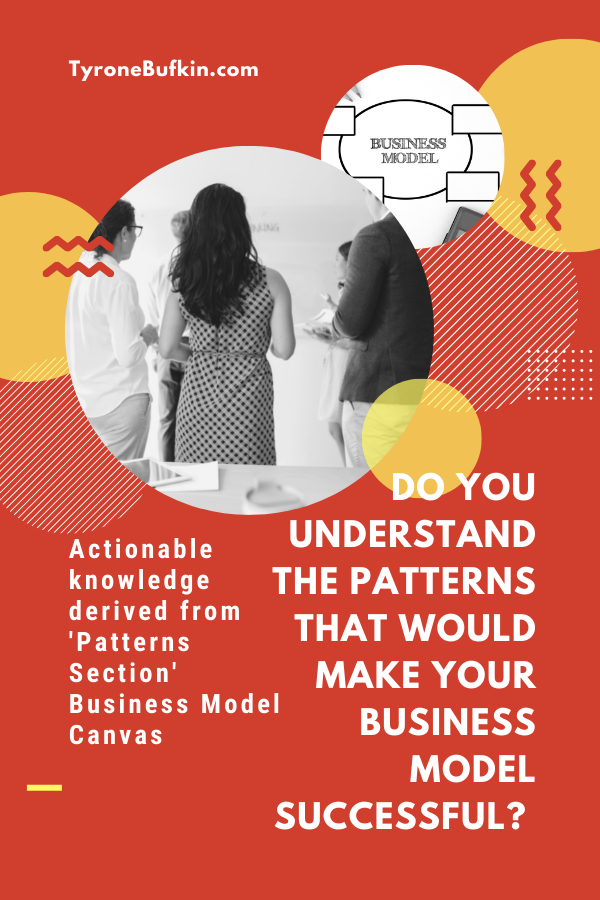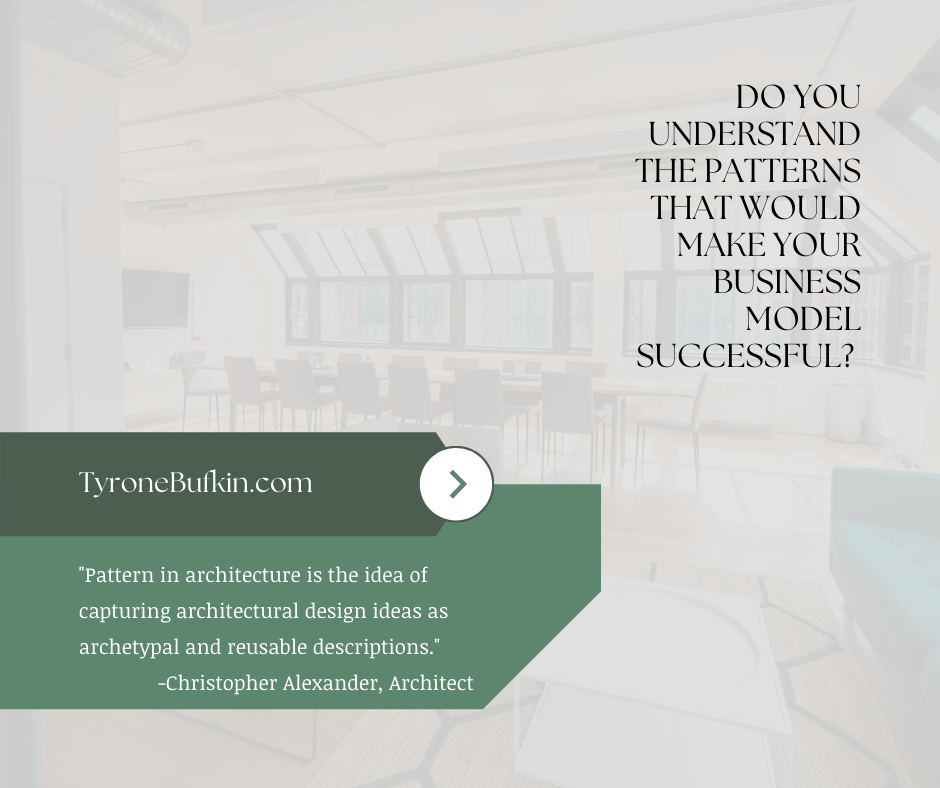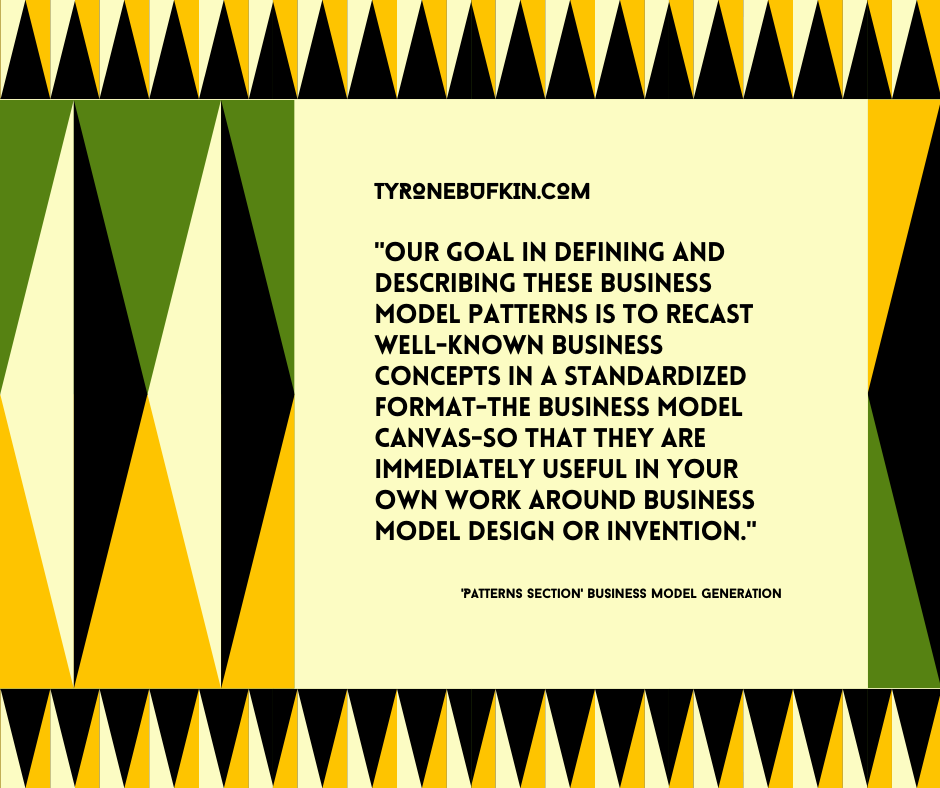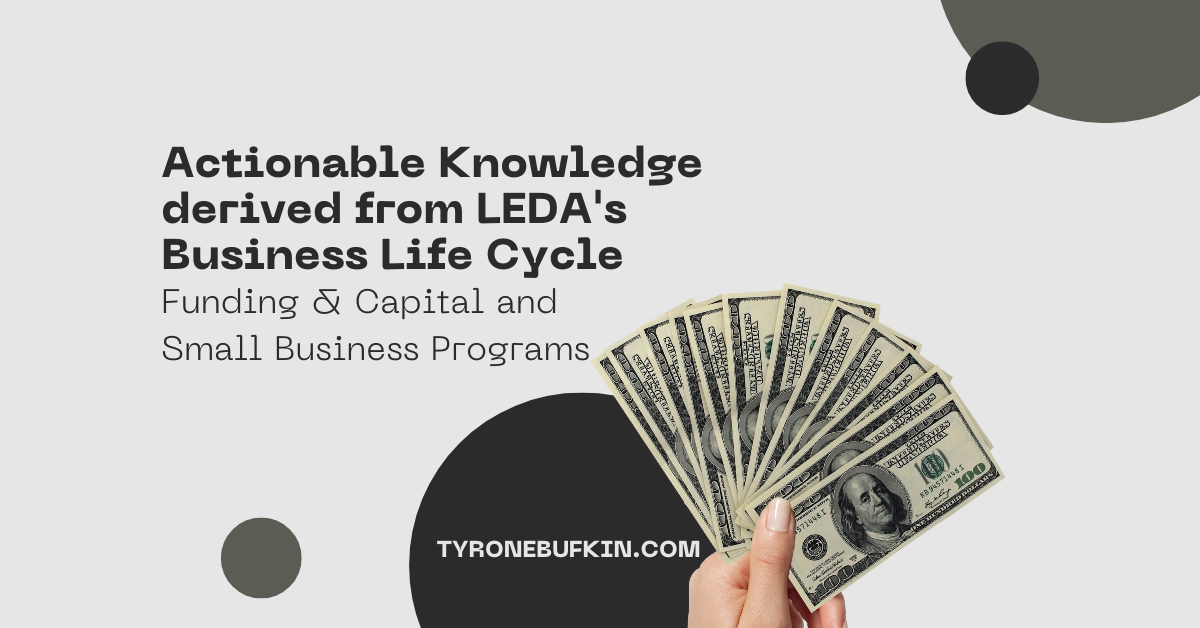THE FIDUCIARY ACTIONABLE KNOWLEDGE IN THIS POST MAY CONTAIN AFFILIATE LINKS. WE GET A COMMISSION, AT NO COST TO YOU, IF YOU DECIDE TO CLICK THROUGH CERTAIN LINKS. WE ONLY RECOMMEND PRODUCTS OR ORGANIZATIONS THAT WE BELIEVE WILL PROVIDE YOU WITH REAL RESULTS. THE INFOMATION IN THIS POST MAY HAVE BE DERIVED FROM THE SOURCES FOUND IN THE 'WORKS CITED' SECTION AT THE BOTTOM OF THE PAGE. PLEASE READ OUR DISCLOSURE PAGE FOR MORE INFO.
In order for your organization to adapt to harsh new realities, you need to understand the patterns within the Business Model Generation. It explains the most common Business Model patterns, based on concepts from leading business thinkers, and helps you reinterpret them for your own context. You will learn how to systematically understand, design, and implement a game-changing business model—or analyze and renovate an old one. Along the way, you'll understand at a much deeper level your customers, distribution channels, partners, revenue streams, costs, and your core value proposition. If you're ready to change the rules, you belong to "the business model generation!"
I know you are just as busy as I am so I've organized the information into three sections; The outcome and actions to achieve it, A condensed summary, and finally my full summary.

Outcome: Identify & strengthen your business based on one of the 5 core business model patterns.

List of Action Items
- An Unbundled Business Model is a single corporation avoiding conflicts and undesirable trade-offs by separating operations into three fundamentally different entities; customer relationship businesses, product innovation businesses, and infrastructure businesses.
- A Long Tail Business Model offers a large number of niche products; each of which sells infrequently.
- Multi-Sided Platforms Business Models facilitates interactions between two interdependent customer segments
- FREE as a Business Model has at least one substantial customer segment that continuously benefits from a free-of-charge value proposition which is financed by another part of the business model or another customer segment.
- Open Business Models are used by companies who create value by collaborating with outside partners.
- Download a Free Business Model Canvas which will include an introductory training course.
Condensed Content Summary
An Unbundled Business Model is a single corporation avoiding conflicts and undesirable trade-offs by separating operations into three fundamentally different entities; customer relationship businesses, product innovation businesses, and infrastructure businesses. Each entity has different economic, competitive, and cultural imperatives. A company should unbundle and focus on the new core business if outsources strengthens the key asset of the business ( Unbundling Business Models )
A Long Tail Business Model offers a large number of niche products; each of which sells infrequently. The goal is to produce more aggregate revenue from many infrequent sales than to focus on "Hit" products. The platform and production will be critical in order to have so many niche products available. Long Tail business models usually rely on the internet as a customer relationship and/or transaction channel. The key resource is the platform; key activities include platform development, maintenance, niche content acquisition, and production. Niche content providers are the key partners in this pattern. The main cost incurred is the platform development and maintenance. ( Long Tail Business Models )

Multi-Sided Platforms Business Models facilitate interactions between two interdependent customer segments; You could not deliver a value proposition to one without the other. Because Multi-side platforms often face a chicken vs egg dilemma, they often focus their resources on one customer segment in order to get the other. This strategy can of course backfire if you are unable to attract the second customer segment. One way to solve this problem is by subsidizing a customer segment. Each customer segment has its own value proposition and associated revenue stream; one customer segment cannot exist without the others. The value proposition usually creates value in three main areas: attracting user groups, matchmaking between customer segments, and reducing costs by channeling transactions through the platform. One or more segments may enjoy free offers or reduced prices subsidized by revenues from other customer segments. The key resources required for this business model are the platform and the key activities and main costs are usually platform management, service provisioning, and platform promotion. ( Multi-Sided Platforms Business Models )
FREE as a Business Model has at least one substantial customer segment that continuously benefits from a free-of-charge value proposition. Customers who don't pay are financed by another part of the business model or another customer segment. There are several patterns that make integrating free products and services into a business model possible. Free offer based on multi-sided platforms means one customer segment is attracted with free content, products, or users and the other customer segment generates revenue related to the first customer segment. Freemium model is a large user base that benefits from the value proposition and only a portion, often less than 10% will convert to paying customers. The paying customers subsidize the free users. Bait & Hook involves a free or inexpensive initial offer that lures customers into repeat purchases of related products or services. Customers are attracted by the instant gratification of a cheap or free initial product or service. The cheap or free initial product or service is linked or 'locked in' to a high-margin follow-up item or service. The focus is on the delivery of follow-up products or services. Bait & hook patterns usually require a strong brand. ( FREE as a Business Model )

Open Business Models are used by companies who want to create value by collaborating with outside partners. Usually opening up their research process to outside knowledge, intellectual property, and products. Outside-in innovation occurs when an organization brings external ideas, technology, or intellectual property into its development and commercialization processes. Inside-out innovations occur when organizations license or sell their intellectual property or technologies, particularly unused assets. ( Open Business Models )

It is important to define the similarities or patterns within business models. It helps you understand your business model dynamics. A single business model can incorporate several of these patterns. Hopefully, this summary of the patterns sections of the business model generation is helpful but encourage you to read it for yourself to best understand it.
Check out the Business Model Canvas for yourself. If you are interested in a more detailed summary continue reading.
Full Content Summary
Unbundling Business Models
How does the idea of unbundling apply to business models? A good example would be the Zurich-based private banking institution, Maerki Baumann. It unbundled its transaction-oriented platform business into a separate entity called Incore Bank, Maerki Baumann focuses solely on building customer relationships and advising clients. If the bank kept a bundled business model there would be conflicts and undesirable trade-offs including serving two different markets with very different dynamics, the conflict of interest when selling its products to competing banks, and the advisors would be pressured to sell the bank's own products regardless if it is the best for the client.
The concept of the 'unbundled' corporation holds that there are three fundamentally different types of business: customer relationship businesses, product innovation businesses, and infrastructure businesses. Each type has different economic, competitive, and cultural imperatives. The three types may co-exist within a single corporation, but ideally, they should be 'unbundled' into separate entities in order to avoid conflicts or undesirable trade-offs. Companies should focus on one of three value disciplines: operational excellence, product leadership, or customer intimacy.
Product innovation businesses rush to market in order to charge higher prices and gain the most market share (economic), fight for talent among many small players (competition), and focus most on protecting the talent they acquire (culture).
Customer relationship businesses have to consolidate resources in order to absorb the high cost of customer acquisition (Economics), fight for those resources among a few players (Competition), and are one-track-minded on serving the customer first (Culture).
Lastly, the infrastructure management business manages high costs with bulk acquisitions of resources (economics), fight for those resources among a few players (competition), and focuses more on standardization and efficiency in order to lower cost (culture).
A company should unbundle and focus on the new core business if outsources strengthens the key asset of the business.
The Unbundled Business Model has the following pattern. Services are usually delivered to business customers. Activities are focused on leveraging research and development to bring new products and services to market. Products and services are usually delivered through B2B intermediaries focused on customer relationships. Revenues are based on low margins and high volumes. The high premium pricing is possible because of the novelty factor. This model aims at generating revenues with a broad scope of products built upon customer trust; the goal is to win a large 'share of wallet'. Key assets and resources are the customer base and subscriber trust acquired over time. The activities are focused on delivering infrastructure services. Product and service innovation, infrastructure acquired from third parties. The platform is characterized by high fixed costs, which are leveraged through scale and large volume. The high-cost base is due to the battle over creative talent. Customer acquisition and retention comprise the main costs, which include branding and marketing expenses.
If you are a solo entrepreneur and ever wondered how you are supposed to compete with much bigger companies, the answer maybe you don't need to compete on everything. Identifying your key asset and outsourcing the other sections of your business will make you a stronger company and able to compete.
Long Tail Business Models
You have a Long Tail Business Model if you offer a large number of niche products; each of which sells infrequently such as Netflix, eBay, YouTube, and Facebook. Your hope is to produce more aggregate revenue from many infrequent sales than to focus on "Hit" products. The platform and production will be critical in order to have so many niche products available. Also if you serve two different customer segments your Long Tail model can create a Multi-Side platform.
Infrequent sales of a very large number of niche items can produce aggregate revenues equivalent to or even exceeding revenues produced by focusing on 'hit' products. Three economic triggers gave rise to this phenomenon in the media industry.
The long tail business model has transformed the book publishing industry. In the old business model, aspiring authors would submit their manuscripts to publishing houses, and publishing houses, in order to stay in business, would only select those that seem most likely to achieve minimum sales targets. Using the long Tail Business Model companies such as Lulu.com allow anyone and everyone to publish and cater to all readers. The books are only printed in response to actual orders and thus lower the risk to the company.
The LEGO company, in an effort to stay competitive, open a new division using the Long Tail Business Model called LEGO Factory. They allowed customers to assemble their very own LEGO kits and order them online. Now in addition to its original kits and licensed characters, LEGO factory sells low volumes of user-designed sets to anyone online.
The democratization of tools of production wherein falling technology costs gave amateurs access to tools that were prohibitively expensive used only by funded professionals just a few years ago. The democratization of distribution wherein the internet has made digital content distribution a commodity, and dramatically lowered inventory, communications, and transaction costs, opening up new markets for niche products. Finally, powerful search and recommendation engines have falling search costs that relieve the challenge of connecting niche content with interested potential buyers.
The long Tail Business Model has the following pattern. The focus is on niche customers. The value proposition is characterized by offering a wide scope of 'non-hit' or user-generated items that may co-exist with 'hit' products. Long Tail business models usually rely on the internet as a customer relationship and/or transaction channel. The model is based on aggregating small revenues from a large number of items. The key resource is the platform; key activities include platform development, maintenance, niche content acquisition, and production. Niche content providers are the key partners in this pattern. The main cost incurred is the platform development and maintenance.
If it is not obvious, this model may be the hardest to create and maintain. It requires you to have a lot of inventory and holding so much inventory takes a lot of time, money, and other resources. However, when the inventory is managed correctly this business model can be very lucrative.
Multi-Sided Platforms Business Models
As a multi-sided platform, Google has a very distinct revenue model. It makes money from one customer segment, advertiser while subsidizing free offers to two other segments: Web surfers and content owners. Google's key resource is its highly complex proprietary search platform supported by an extensive IT infrastructure.
On one hand, a game console manufacturer has to draw as many players as possible to attract game developers but the players only buy the hardware if there is a sufficient number of interesting games available for that console. Three interlinked business models factors explain the commercial success of the Wii: low-cost differentiation of the product, focus on the new, untapped market that cares less about technology, and generates revenues from both sides of the double-sided platform.
Multi-Sided Platforms Business Models would include your business model if your business facilitates interactions between two interdependent customer segments; You could not deliver your value proposition to one without the other; such as credit card companies, Google, and Facebook. Because Multi-side platforms often face a chicken vs egg dilemma, they often focus their resources on one customer segment in order to get the other. This strategy can of course backfire if you are unable to attract the second customer segment.
Multi-sided platforms have existed for a long time. They are platforms that create value by bringing together two or more distinct but interdependent groups of customers. The key is that the platform must attract and serve all groups simultaneously in order to create value.
The platform's value for a particular user group depends substantially on the number of users on the platform's 'other sides' Hence multi-sided platforms often face a 'chicken and egg' dilemma. One way to solve this problem is by subsidizing a customer segment. One difficulty multi-sided platform operators face is understanding which side to subsidize and how to price correctly to attract customers.
Operators of multi-sided platforms must ask themselves several key questions: Can we attract sufficient numbers of customers from each side of the platform? Which side is more price-sensitive? Which side will generate sufficient revenues to cover the subsidies?
The multi-Sided Platforms Business Model has the following pattern. They have two or more customer segments, each of which has its own value proposition and associated revenue stream; one customer segment cannot exist without the others. The value proposition usually creates value in three main areas: attracting user groups, matchmaking between customer segments, and reducing costs by channeling transactions through the platform. One or more segments may enjoy free offers or reduced prices subsidized by revenues from other customer segments. The key resources required for this business model are the platform and the key activities and main costs are usually platform management, service provisioning, and platform promotion.
This model is one of the most popular business models but it is also one of the riskiest because you must satisfy both customer segments. The best way to ensure this model works is to find a way to maintain sufficient revenue from both customer segments or generate multiple independent revenue streams.
FREE as a Business Model
FREE as a Business Model has at least one substantial customer segment that continuously benefits from a free-of-charge value proposition. Customers who don't pay are financed by another part of the business model or another customer segment; such as Flickr, Skype, or Google. Receiving something free of charge has always been an attractive value proposition. The question is how can you systematically offer something for free and still earn substantial revenues? Part of the answer is that the cost of producing certain giveaways has fallen dramatically, but an organization must still generate revenue somehow.
Advertising is a well-established revenue source that enables free offers using the multi-sided platform pattern. One side is designed to attract users with free content, products, or services and the other side generates revenue by selling space to advertisers.
There are several patterns that make integrating free products and services into a business model possible including a multi-sided platform and the freemium model. The rise of free-of-charge offers is closely related to the fundamentally different economics of digital products and services.
Free offer based on multi-sided platforms - One customer segment is attracted with free content, products, or users and the other customer segment generates revenue related to the first customer segment.
Freemium - A large user base benefits from the value proposition and only a portion, often less than 10% will convert to paying customers. The paying customers subsidize the free users. In the Freemium model, the key metrics to watch are the average cost of serving a free user and the rates at which free users convert to paying customers. The insurance companies flipped the freemium model upside down by having a large base of paying customers subsidizing a small group of people with actual claims.
Bait & Hook - a free or inexpensive initial offer that lures customers into repeat purchases of related products or services. This pattern is also known as the 'loss leader' or razor & blades' model. This pattern is popular with the mobile telecommunication industry, disposable razor blades, and inkjet printers. Customers are attracted by the instant gratification of a cheap or free initial product or service. The cheap or free initial product or service is linked or 'locked in' to a high-margin follow-up item or service. The focus is on the delivery of follow-up products or services. Bait & hook patterns usually require a strong brand.
FREE as a business, in my opinion, is one the riskiest models and hard to control long term. However, it is one of the easiest models to attract new customers.
Open Business Models
In order to link its internal resources and R&D activities with the outside world, Procter & Gamble built three 'bridges' into its business model: technology entrepreneurs, internet platforms, and retirees. This outside-in open business model allowed the technology entrepreneurs to develop relationships with researchers at universities and other companies through internet platforms that provide expert solutions for internal challenges.
GlaxoSmithKline's goal is to make drugs more accessible in the world's poorest countries and to facilitate research into understudied diseases. One way to achieve this was to place intellectual property rights relevant to developing drugs for such diseases into a patent pool open to exploration by other researchers.
Open Business Models are used by companies who want to create value by collaborating with outside partners. Usually opening up their research process to outside knowledge, intellectual property, and products. Outside-in innovation occurs when an organization brings external ideas, technology, or intellectual property into its development and commercialization processes. Inside-out innovations occur when organizations license or sell their intellectual property or technologies, particularly unused assets.
The Outside-In Open Business Model has the following pattern. Established companies with strong brands, distribution channels, and customer relationships can leverage them by building on outside sources of innovation. Building on external knowledge requires dedicated activities that connect external entities with internal business processes and R&D groups. Taking advantage of outside innovation requires specific resources to build gateways to external networks. An external organization may be able to offer valuable insights, knowledge, patents, or ready-made products to internal R&D groups. It cost money to acquire innovation from outside sources. But by building on externally-created knowledge and advanced research programs, a company can shorten time-to-market and increase its internal R&D productivity.
The Inside-Out Open Business Model has the following pattern. Some R&D outputs that are used internally may be of high value to organizations in other industries. By enabling others to exploit unused internal ideas, a company adds 'easy' additional revenue streams.
Personally, I love the open business model because I have learned that I can never have all the resources I need when I need them but others do. This method is not without risk because trusting too much to outside partners with bad intentions means they could take everything from you. However, with legal protection in place you can create your vision without having all the resources.
It is important to define the similarities or patterns within business models. It helps you understand your business model dynamics. A single business model can incorporate several of these patterns. Hopefully, this summary of the patterns sections of the business model generation is helpful but encourage you to read it for yourself to best understand it.

Works Cited
Osterwalder, Alexander. "Patterns" Business Model Generation: A Handbook for Visionaries, Game Changers, and Challengers, Yves Pigneur, Strategyzer, 2010.




